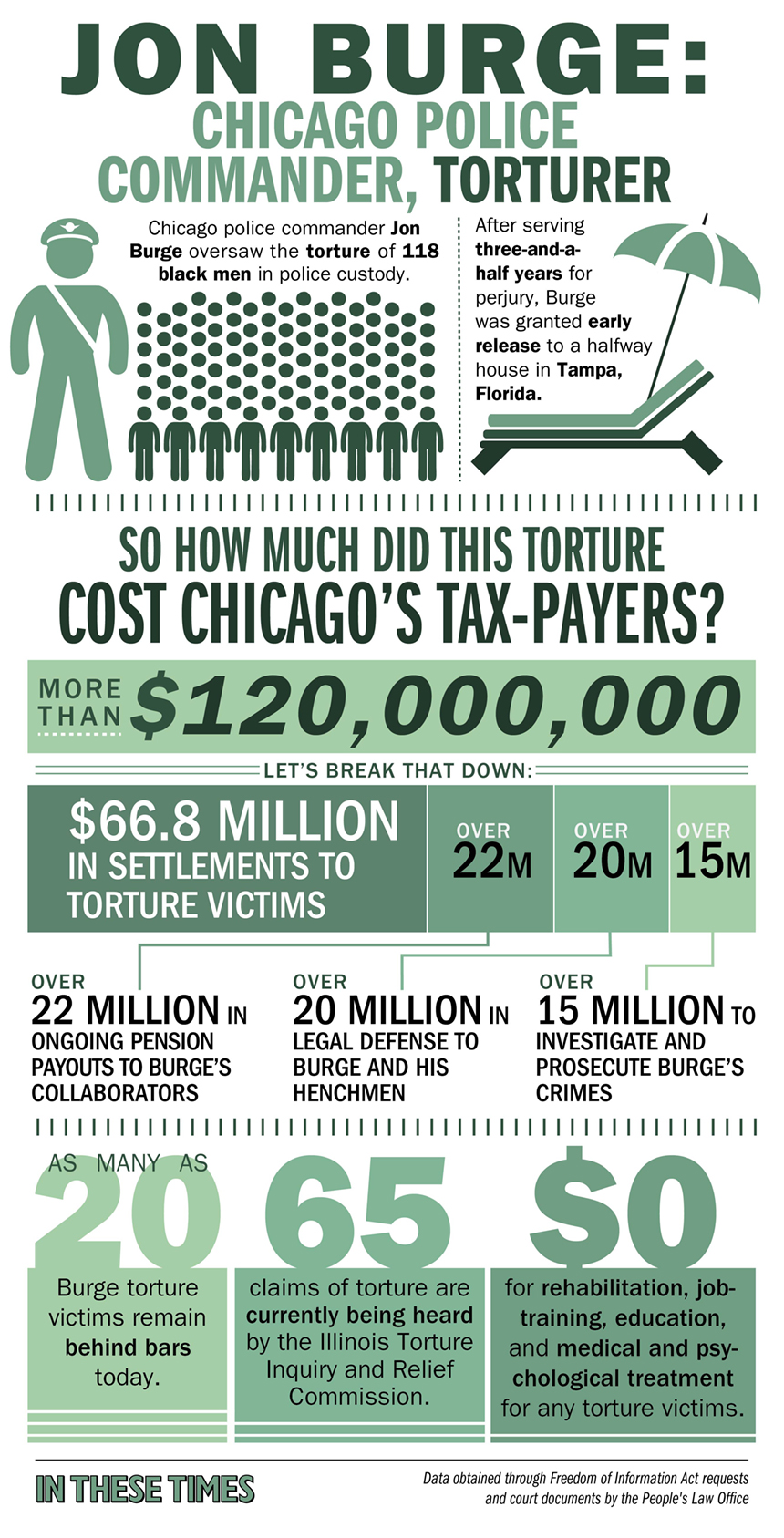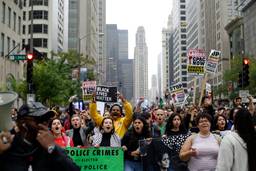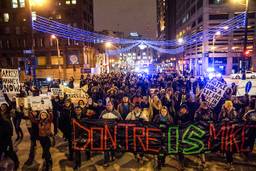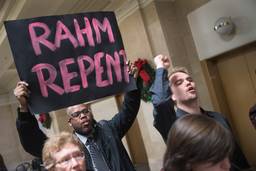Jon Burge, Torturer of Over 100 Black Men, Is Out of Prison After Less Than Four Years
Chicago’s notorious former police commander is released from prison. A human rights lawyer representing police torture victims responds.
Flint Taylor

Today, former Chicago police commander Jon Burge, who was convicted of lying about torturing over 100 African-American men at stationhouses on Chicago’s South and West Sides, will walk out of the Butner Correctional Institution, having been released to a halfway house in Tampa, Florida.
Burge’s 2010 conviction for perjury came nearly 20 years after his reign of racist terror finally ended. From 1972 to 1991, he led a torture ring of white Chicago detectives who routinely used electric shock, suffocation with plastic bags and typewriter covers, mock executions and brutal attacks on the genitals to obtain confessions from their victims. A team of lawyers at the People’s Law Office, including myself, documented 118 such cases. But a series of police superintendents, numerous Cook County prosecutors and a cover-up that implicated former Mayor Richard M. Daley (during his time as both mayor and state’s attorney) protected Burge and his men from prosecution until well after the statute of limitations had run out on their crimes of torture.
Like Al Capone’s prosecution for tax evasion, Burge could only be prosecuted for lying about what he and his men did, not for the deeds themselves. He was sentenced to the maximum term of four and a half years, and ended up serving three and a half before being released to a halfway house — a stark contrast to the fates of his victims, many of whom received death sentences or life in prison on the basis of confessions that were tortured from them.
Despite his felony conviction, Burge continued to collect his pension (now at $54,000 per year) while serving his time, and the Illinois Supreme Court recently decided four to three that he may continue to do so in the future. But the nearly $700,000 that Burge has already collected is little compared to what Chicago, Cook County, the State of Illinois and federal taxpayers have already expended as a result of the Burge torture scandal.

Chicago has spent more than $20,000,000 to provide legal defense to Burge and his men in the numerous civil damages suits brought against them over the years. Chicago, Cook County and the State of Illinois have paid out more than $66,000,000 in settlements to compensate the Burge torture survivors who were wrongfully convicted on the basis of false confessions. The city, county, state and federal governments have spent more than $15,000,000 investigating and prosecuting Burge. And his cabal of officers has received $22,000,000 in pensions to date.
The total financial damage to taxpayers as a result of the torture of over 100 black men that Burge oversaw, and the ongoing payouts to his collaborating officers, now exceeds $120,000,000, and will only keep growing.
While Burge’s conviction and imprisonment were rightly seen as a major victory for the ongoing human rights struggle against police torture, the battle has continued apace. As many as 20 Burge torture victims remain behind bars decades after their convictions, and the movement has focused on demanding new hearings for them at which they would be permitted to present the evidence of systematic torture that has come to light since their convictions.
Some of these men have won new hearings, while others have either been denied or are awaiting decisions from the courts or the Illinois Torture Inquiry and Relief Commission (TIRC) on their requests. A court appointed monitor is examining prisoner files and letters to determine whether there are additional prisoners who may be entitled to judicial review of their claims of Burge-related torture. And the TIRC, which was created by the Illinois Legislature in response to the demands of community activists, is also reviewing some 65 claims of torture and related abuse at the hands of detectives who, while not working for Burge at the time of the alleged torture, had previously worked for him.
While Chicago has spent more than $20 million defending Burge and his crew, the dozens of survivors who have not been officially exonerated have received little or no compensation. Working menial jobs or unemployed, with many in need of health services for their physical and mental trauma, a number of them have courageously stepped forward and testified against Burge or have otherwise spoken out about their torture.
Two leading examples are Anthony Holmes and Darrell Cannon. Holmes, who was the first known victim of Burge’s electric shock and suffocation tactics, was a key witness against Burge at his trial and sentencing nearly 40 years later. Cannon, who in 1983 was subjected to electric shock and a mock execution by three of Burge’s most racist henchmen, has become the leading spokesman in Chicago’s anti-torture movement, and his case is featured in Amnesty International’s current campaign against torture in the United States.
Both men spent decades in prison on the basis of confessions tortured from them, but Holmes has received no compensation, while Cannon received a $3,000 settlement before the torture cover-up came unglued.
The contrast between the official treatment of the torturers and their victims has spurred activists, torture survivors and lawyers working with the Chicago Torture Justice Memorials Project (CTJM) to campaign for the passage of a city ordinance that would address this appalling discrepancy. Introduced into City Council last October by Aldermen Joe Moreno and Howard Brookins, the “Reparations Ordinance” calls for the establishment of a $20 million fund to compensate torture survivors who have so far received little money or nothing at all.
The reparations would also include an official public apology from the City of Chicago and the establishment of a center on Chicago’s South Side where survivors and their families could receive treatment and educational and job training opportunities. Additionally, the ordinance mandates that the history of Chicago police torture be taught in Chicago’s public schools, and that memorials to the torture survivors be erected in the city.
As a result of CTJM’s work, the ordinance now has the sponsorship of a majority of the 50 Chicago city council members. CTJM has also issued a formal request to all of the city’s major Democratic candidates for mayor, both declared and undeclared, to publicly support the ordinance. Chicago Teachers Union President Karen Lewis, who is considering challenging Mayor Rahm Emanuel in the 2015 mayoral race, has issued a strong endorsement of the ordinance, stating that “reparations for the survivors of Chicago police torture are long past due.”
With the February 2015 primary fast approaching, Emanuel, whose assertions of concern for the needs of the African-American community all too often ring hollow, would be wise to consider the consequences of failing to support such a reasonable effort to heal the still festering wounds inflicted by the torture scandal.
Chicago, like the country at large, has been sensitized to racist police violence by the events in Ferguson, Missouri. In July, two African-American youths were shot down by Chicago police officers, and a Chicago police commander has been suspended and criminally charged for torturing an arrestee by shoving a gun into his mouth.
In this racially charged atmosphere, Burge’s release serves to further energize the forces that are fighting for justice for the survivors of torture. Reparations and fair hearings will go a long way to finally affording closure to a scandal that has dogged Chicago for more than forty years.








